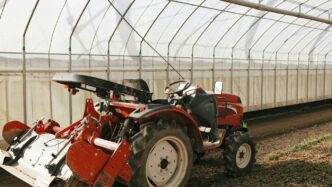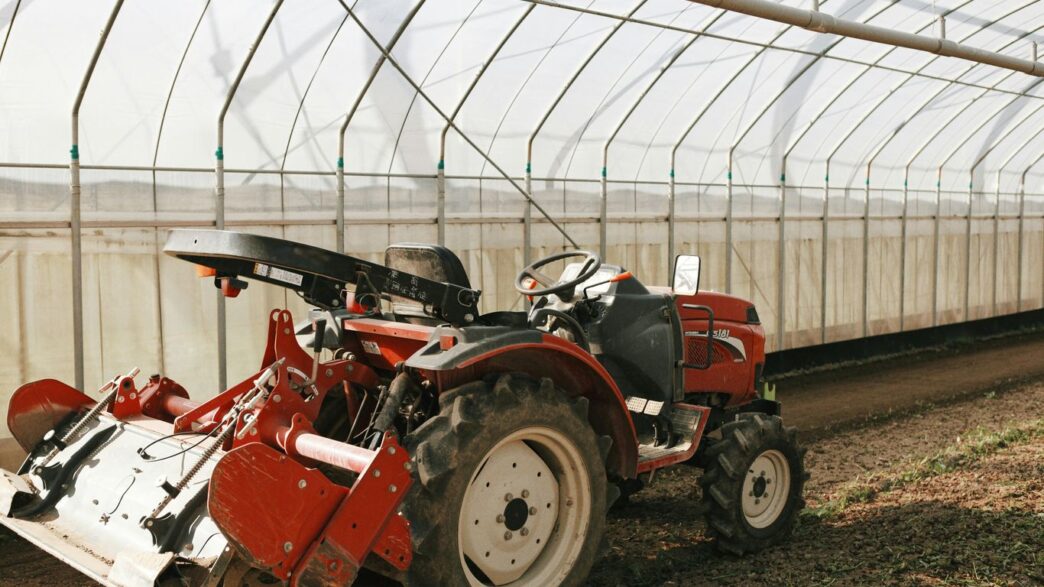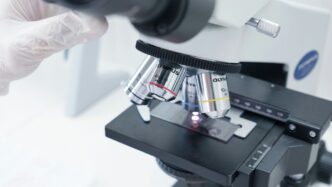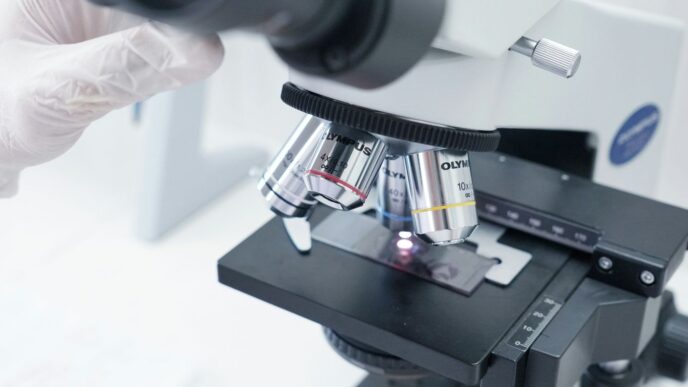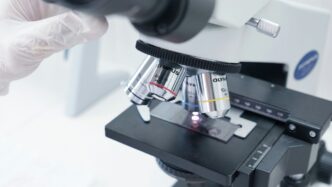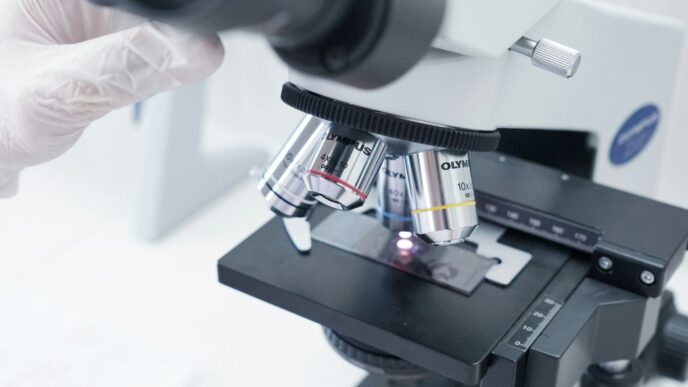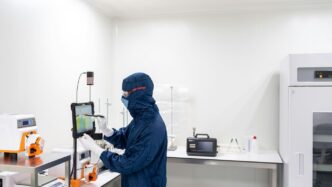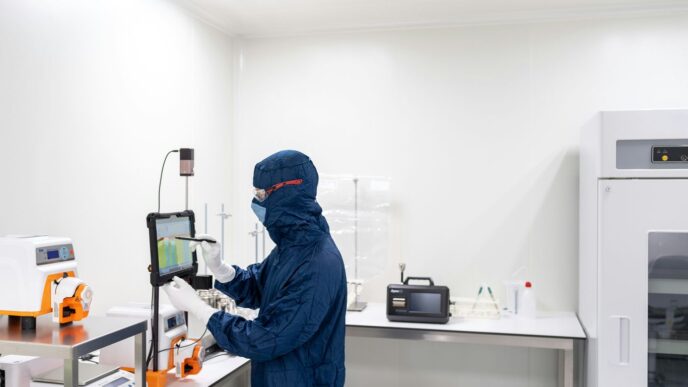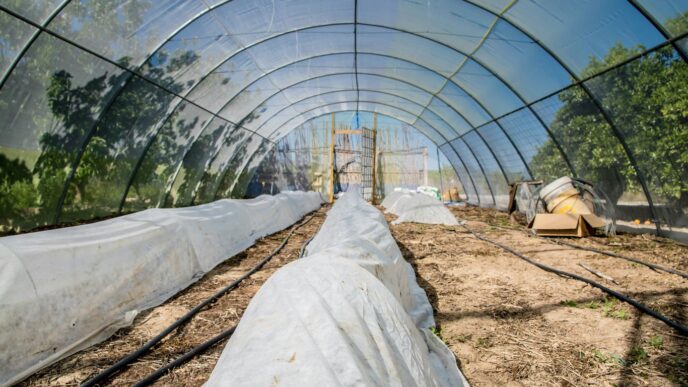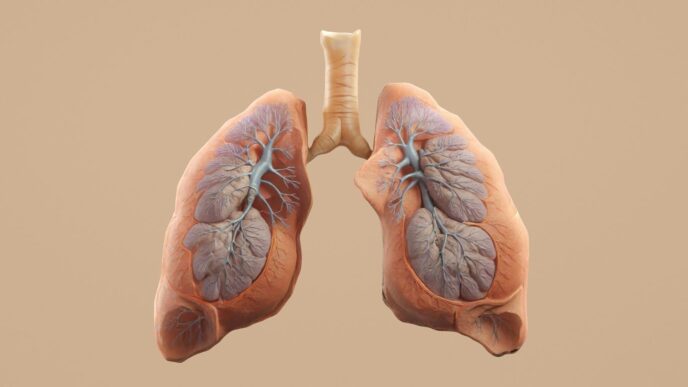Farming is changing, and fast. We’re talking about how science is helping us grow more food, better food, and do it in ways that are kinder to the planet. It’s not just about new machines; it’s about smart science, like tweaking plant genes to survive tough weather or using tiny microbes to keep crops healthy. This shift, often called modern agricultural biotechnology, is what we’ll explore. It’s a big deal for feeding everyone, now and in the future.
Key Takeaways
- Modern agricultural biotechnology uses science to make crops grow better, resist problems, and be more nutritious.
- Tools like gene editing (think CRISPR) and using helpful microbes are changing how we grow food.
- Farming is getting smarter with digital tech like AI and remote sensing helping farmers make better decisions.
- Even animal farming is seeing changes with science helping to breed healthier, more productive livestock.
- While there’s a lot of promise, we still need to figure out rules, get people on board, and make sure all farmers can use these new methods.
Revolutionary Strides in Modern Agricultural Biotechnology
Agriculture is changing, and a lot of that change is thanks to new biotech tools. We’re not just talking about tweaking things a little; these are big shifts that help us grow more food, better food, and do it in ways that are kinder to the planet. It’s pretty exciting stuff, honestly.
CRISPR and Precision Gene Editing: The Foundation of Crop Engineering
Think of CRISPR as a super-precise pair of molecular scissors. It lets scientists make really specific changes to a plant’s DNA. Unlike older methods that sometimes involved adding DNA from other species, CRISPR can often just edit what’s already there. This means we can develop crops with traits like better disease resistance or improved nutritional value much faster and with fewer regulatory headaches. For example, researchers are using it to create wheat that fights off fungal infections on its own, or rice that’s packed with more vitamins. This precision is a game-changer for developing crops tailored to specific needs.
Developing Drought and Climate-Resilient Crop Varieties
Climate change is making farming tougher, with more unpredictable weather and longer dry spells. Biotechnology is stepping up to help. Scientists are creating crop varieties that can handle tough conditions. This includes crops that need less water, can survive in salty soils, or can withstand extreme heat. The Water Efficient Maize for Africa (WEMA) project, for instance, has brought drought-tolerant maize to farmers in parts of Africa. These resilient crops are vital for keeping food production stable, especially in regions most affected by climate shifts.
Harnessing Microbial Power: Biofertilizers and Biopesticides
Our soil is full of tiny life, and we’re learning to work with it. Instead of relying heavily on synthetic fertilizers and pesticides, which can harm the environment, we’re turning to microbes. Biofertilizers use beneficial bacteria and fungi to help plants absorb nutrients from the soil more effectively. This means less need for chemical fertilizers. Similarly, biopesticides use natural organisms or substances to control pests. These approaches not only reduce chemical use but also help improve soil health over time. It’s like giving the plants a natural defense system and a better diet, all thanks to the microscopic world.
Integrating Digital Technologies with Modern Agricultural Biotechnology
It’s pretty wild how much technology is changing farming these days, right? We’re not just talking about tractors anymore. Modern agricultural biotechnology is getting a serious boost from digital tools, and it’s making a big difference in how we grow food. Think of it like giving super-powered glasses and a smart assistant to farmers. These digital systems help us use all those cool biotech advancements, like gene-edited crops or biofertilizers, much more effectively. The real magic happens when these two worlds collide, leading to smarter, more efficient farming.
AI-Driven Tools for Precision Agriculture
Artificial intelligence is really stepping up. AI can look at tons of data – like weather patterns, soil conditions, and even how a specific plant is growing – and figure out exactly what a field needs. This means we can apply fertilizers, water, or pest control exactly where and when it’s needed, not just guess. It’s like having a doctor for every single plant. This precision stops waste and makes sure crops get the best possible care, which is a win-win for the farmer and the environment.
Remote Sensing and Data Analytics in Farming
Satellites and drones are basically giving us eyes in the sky. They can capture images of fields that show us things we can’t see from the ground, like early signs of disease or nutrient deficiencies. All this information gets crunched by data analytics. We can then see trends, predict problems before they get bad, and make better decisions about planting, watering, and harvesting. It helps us understand our fields on a whole new level.
The Farmonaut Advantage: Enabling Digital Integration
So, how do smaller farms or those in less developed areas get in on this? That’s where companies like Farmonaut come in. They’re building platforms that make these advanced digital tools more accessible and affordable. Imagine getting advice tailored to your specific farm, right on your phone, based on data from sensors and satellites. This kind of integration helps democratize innovation, meaning more farmers, no matter their size or location, can benefit from the latest biotech and digital farming techniques. It’s about making sure everyone has a shot at using these powerful new methods to grow more food sustainably.
Advancements in Livestock and Animal Breeding
It’s not just about plants anymore; animal agriculture is seeing some pretty big changes thanks to biotech too. We’re talking about making our farm animals healthier, more productive, and generally better off. Think of it as giving them a genetic tune-up.
Livestock Genomics for Enhanced Productivity
This is where we get really detailed with an animal’s DNA. By looking at the whole genetic makeup of livestock – like cattle, pigs, and chickens – we can figure out which animals have the best traits. We’re not just guessing anymore. Scientists can pinpoint genes linked to things like how well an animal converts feed into meat or milk, how strong its immune system is, or even how well it handles heat. This genomic information is like a blueprint for breeding better animals. It helps farmers make smarter choices about which animals to breed, aiming for offspring that are more efficient and resilient.
Marker-Assisted Animal Breeding Strategies
So, how do we actually use all that genomic data? That’s where marker-assisted breeding comes in. Instead of waiting years to see how an animal performs, we can use specific genetic markers – think of them as signposts in the DNA – to identify desirable traits early on. It speeds things up a lot.
Here’s a simplified look at how it works:
- Identify the Goal: Decide what trait you want to improve, like faster growth or better disease resistance.
- Find the Markers: Use genetic testing to find specific DNA markers associated with that trait.
- Select and Breed: Choose parent animals that have the right markers and breed them.
- Evaluate Offspring: Use the markers again to confirm the offspring have inherited the desired traits.
This approach is making a real difference. For example, dairy cows can be bred for higher milk production with better udder health, and beef cattle can be selected for leaner meat and faster growth rates. It’s all about precision, making sure we’re breeding for the traits that matter most for both the farmer and the consumer, while also improving the well-being of the animals themselves.
Market Dynamics and Growth of Modern Agricultural Biotechnology
It feels like everywhere you look these days, there’s talk about how much the agricultural biotechnology market is growing. And honestly, it’s not just talk. Things are really picking up speed. A big part of this surge comes from more money flowing into research and development, both from private companies and government grants. Plus, there’s a growing need for food systems that are kinder to the planet, which biotech is really good at addressing.
Projected Market Growth and Adoption Rates
The numbers show a pretty clear upward trend. We’re seeing faster approvals for new biotech products, and it’s getting easier for farmers to actually use these new tools, thanks to better digital integration. This means more and more farms, big and small, are starting to adopt these innovations. Think about gene-edited seeds and bio-based inputs – they’re becoming the go-to for farmers looking to get the most out of their land while being more sustainable. It’s a win-win, really.
Here’s a quick look at how some key areas are expected to be adopted:
- CRISPR Gene Editing: Expected to be on about 40% of relevant crops by 2025, potentially boosting yields by 20-25%.
- Drought/Climate-Resilient Seeds: Aiming for 35% adoption, with yield increases around 18-22%.
- Microbial Biofertilizers: Targeting 30% adoption, offering 10-15% yield improvements.
- Digital Precision Agriculture: With 38% adoption, these tools are helping optimize everything.
Investment Trends in Agri-Biotech Innovations
When it comes to where the money is going, it’s pretty interesting. A lot of investment is focused on what they call ‘biology-first’ and ‘AI-native’ solutions. This means companies are really digging into how natural biological processes can be improved with smart technology. We’re seeing big companies buying up smaller ones that have promising biological products, and distributors are teaming up with innovators to get these products to farmers faster. It’s all about finding ways to make farming more productive and sustainable, and a lot of smart money is betting on biotech to get us there. There’s also a big push for investments that consider environmental, social, and governance (ESG) factors, meaning companies are looking for biotech solutions that not only boost profits but also help the environment and society.
Navigating Challenges in Modern Agricultural Biotechnology
Even with all the amazing progress in agricultural biotech, it’s not all smooth sailing. There are definitely some hurdles we need to get over before these innovations can really help feed everyone. It’s a bit like trying to build a super-fast car, but then realizing the roads aren’t quite ready for it yet.
Regulatory Landscapes and Public Acceptance
Getting new biotech products out into the world involves a lot of paperwork. Different countries have different rules, and sometimes the approval process can take years. It’s a real maze to figure out. Plus, there’s the whole public perception thing. You know, people hear "genetically modified" or "gene editing" and sometimes get worried, even when the science says it’s safe. A lot of this worry comes from just not having all the facts, or maybe hearing some scary stories that aren’t quite true. We need to do a better job of explaining what these technologies actually do and why they’re important.
Here’s a quick look at some of the common concerns:
- Safety: Are these new crops safe to eat? Do they affect our health in the long run?
- Environment: What happens if these modified genes spread to wild plants? Could they harm other insects or animals?
- Control: Who really owns these new seeds? Are big companies getting too much power over our food supply?
Addressing Environmental and Ethical Considerations
Beyond just safety, there are bigger questions about how these technologies fit into the environment and our society. For example, while some biotech crops can reduce the need for pesticides, we still need to think about the overall impact on biodiversity. Are we accidentally wiping out helpful insects? And when we talk about gene editing, there are ethical debates about how far we should go. It’s about finding a balance between pushing the boundaries of science and respecting the natural world.
Ensuring Access and Equity for Global Farmers
This is a big one. A lot of these cutting-edge technologies are developed by big companies, and they can be pretty expensive. That means smaller farmers, especially in developing countries, might not be able to afford them. If only a few farmers can use these tools, it won’t really solve the global food problem. We need to figure out ways to make sure these innovations are available to everyone, not just the wealthy. It’s about making sure that the benefits of agricultural biotechnology reach the people who need them the most, helping them grow more food and improve their livelihoods.
The Future Landscape of Agricultural Biotechnology
So, what’s next for farming tech? It’s pretty exciting, honestly. We’re looking at a future where agriculture is way smarter and kinder to the planet. Think about it: we’ve got these amazing new tools that are changing how we grow food, and they’re only getting better.
Emerging Fields: Synthetic Biology and Microbiome Engineering
Synthetic biology is like giving nature a tune-up. Scientists can essentially reprogram living things to do new jobs, like making crops that produce their own fertilizer or are super resistant to pests. It’s not just about tweaking existing genes anymore; it’s about building new biological functions from the ground up. Then there’s microbiome engineering. We’re starting to really understand how the tiny organisms in the soil and on plants work together. By managing these microbial communities, we can help plants get more nutrients from the soil and become tougher against tough conditions, all without needing as many chemical sprays. This focus on harnessing natural systems is a big shift.
Climate-Smart Biotechnology Solutions
Climate change is a huge deal for farmers, right? Well, biotech is stepping up. We’re seeing more crops designed to handle extreme heat, drought, or too much rain. But it’s not just about survival; it’s also about making farms part of the climate solution. Some new techniques are helping plants pull more carbon dioxide out of the air and store it in the soil. Others are all about using less water. It’s a multi-pronged approach to make farming more sustainable and less of a burden on the environment.
The Role of Biotechnology in Global Food Security
With the world population growing, feeding everyone is a massive challenge. Biotechnology is key to meeting this demand. It helps us grow more food on less land, using fewer resources. Think about it: if we can make crops that yield more and are resistant to diseases and bad weather, we’re much better positioned to feed billions. It’s about making sure that no matter where you are, there’s enough healthy food available. This isn’t just about big farms either; the goal is to make these technologies accessible to farmers everywhere, big or small, so everyone benefits.
Looking Ahead: A Greener, Smarter Plate
So, what does all this mean for the future of our food? Basically, farming is getting a serious upgrade. We’re seeing tools and techniques that help crops grow better, use less water, and fight off pests without all the harsh chemicals. It’s not just about making more food, but making it in a way that’s kinder to the planet. While there are still some hurdles to jump, like making sure everyone can access these new methods and keeping people informed, the direction is clear. We’re moving towards a system where technology and nature work together to feed us all, now and for generations to come. It’s pretty exciting stuff, really.
Frequently Asked Questions
What exactly is agricultural biotechnology?
Think of agricultural biotechnology as using science to make plants, animals, and even tiny microbes better. It’s like giving nature a helpful upgrade using tools like gene editing or special helpful germs to grow more food, protect crops from bugs and weather, and make farming kinder to the planet.
How does gene editing like CRISPR help crops?
CRISPR is like a super-precise pair of scissors for DNA. It lets scientists make very specific changes to a plant’s genes. This can help create crops that can handle dry weather better, resist diseases without needing lots of sprays, or even have more vitamins. It’s a faster and more exact way to improve crops than older methods.
Are these new biotech crops safe to eat?
Scientists have studied these crops very carefully. The general agreement among scientists is that crops developed with modern biotechnology, including gene editing, are safe to eat. They often go through strict testing before they can be grown or sold.
What are biofertilizers and biopesticides?
Instead of using strong chemical fertilizers and pesticides, biofertilizers use helpful tiny living things (like bacteria or fungi) to give plants the nutrients they need and improve the soil. Biopesticides use natural substances or microbes to fight off pests and diseases. They are gentler on the environment.
How is technology like AI helping farming with biotechnology?
AI and other digital tools, like drones and sensors, work together with biotechnology. They can analyze huge amounts of information about the soil, weather, and plants. This helps farmers know exactly where and when to use specific biotech solutions, like a targeted biofertilizer or a special seed, making farming more efficient and using resources wisely.
Will biotechnology help feed everyone in the world?
Yes, that’s a big goal! With the world’s population growing, we need to produce more food. Biotechnology helps create crops that can grow in tough conditions, yield more food on the same amount of land, and are more resistant to problems. This can help make sure there’s enough food for everyone, especially in places that face challenges like drought or poor soil.

